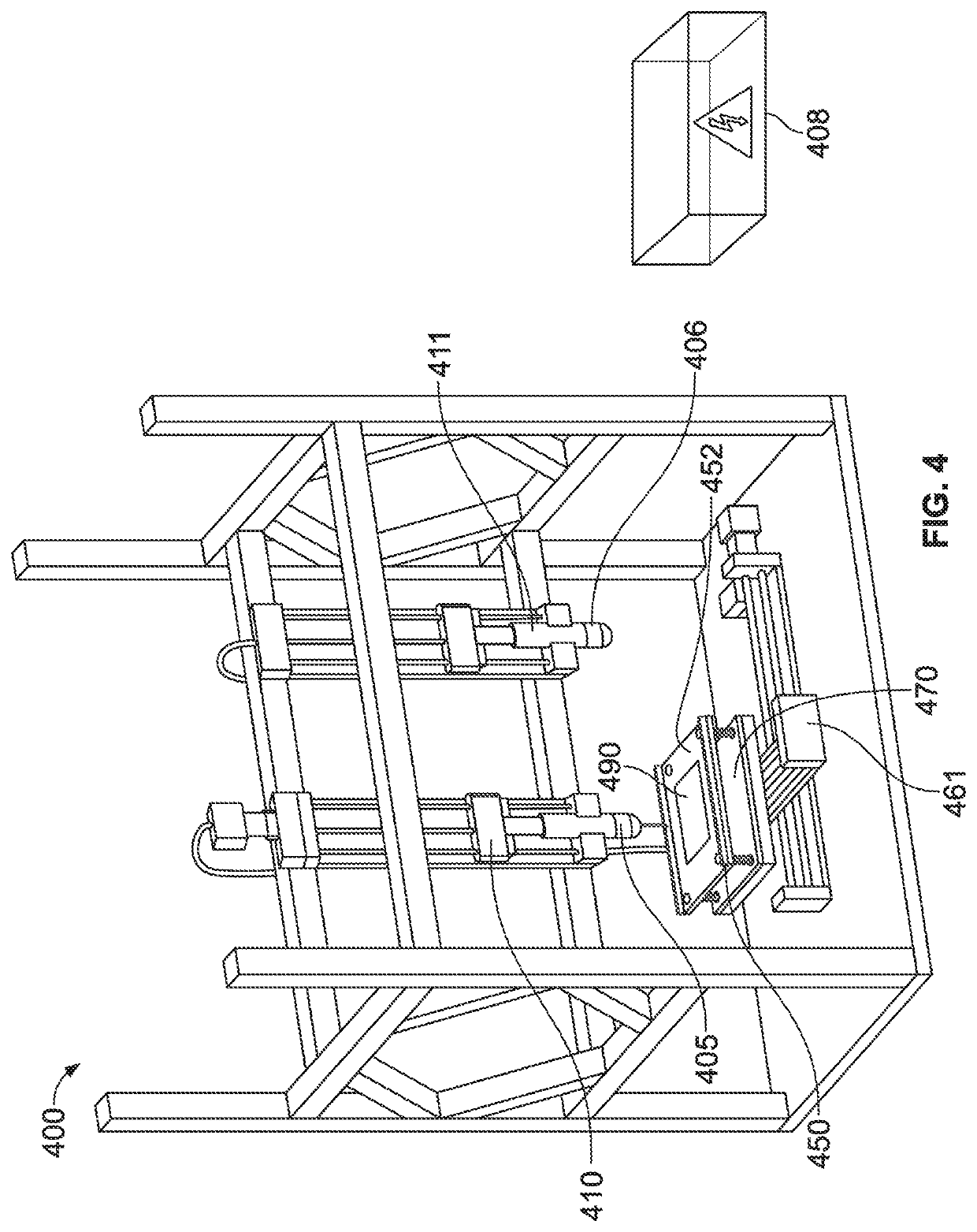Scaffolds for Bone-Soft Tissue Interface and Methods of Fabricating the Same
a technology of soft tissue and scaffolds, which is applied in the direction of manufacturing tools, ligaments, prostheses, etc., can solve the problems of donor-site morbidity, biomechanically, biochemically, histologically insufficient native tissue replacement, and scar-like tissue is biomechanically, biochemically and histologically insufficient to the native tissue,
- Summary
- Abstract
- Description
- Claims
- Application Information
AI Technical Summary
Benefits of technology
Problems solved by technology
Method used
Image
Examples
Embodiment Construction
[0066]Detailed embodiments of the present invention are disclosed herein; however, it is to be understood that the disclosed embodiments are merely exemplary of the invention, which may be embodied in various forms. Therefore, specific structural and functional details disclosed herein are not to be interpreted as limiting, but merely as a representative basis for teaching one skilled in the art to variously employ the present invention in virtually any appropriately detailed method, structure or system. Further, the terms and phrases used herein are not intended to be limiting, but rather to provide an understandable description of the invention.
[0067]A representative schematic of a scaffold 100 for an embodiment of the present invention is shown in FIGS. 1A and 1B. One or more electrospun fibers 110A, 110B and 110C may be made from a plurality of synthetic and / or natural polymer. Layers 110A and 110C, as well as others in the scaffold, form the top and bottom of the scaffold with ...
PUM
| Property | Measurement | Unit |
|---|---|---|
| voltage | aaaaa | aaaaa |
| distance | aaaaa | aaaaa |
| voltage | aaaaa | aaaaa |
Abstract
Description
Claims
Application Information
 Login to View More
Login to View More - R&D
- Intellectual Property
- Life Sciences
- Materials
- Tech Scout
- Unparalleled Data Quality
- Higher Quality Content
- 60% Fewer Hallucinations
Browse by: Latest US Patents, China's latest patents, Technical Efficacy Thesaurus, Application Domain, Technology Topic, Popular Technical Reports.
© 2025 PatSnap. All rights reserved.Legal|Privacy policy|Modern Slavery Act Transparency Statement|Sitemap|About US| Contact US: help@patsnap.com



